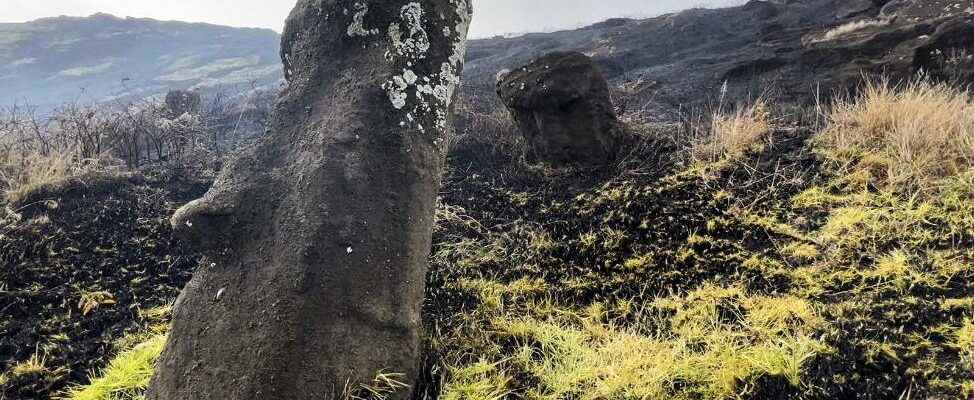A fifth of the 416 megaliths were affected. The disaster would have been lit at the beginning of the week by cattle breeders. A statue suffered “irreparable” damage.
“Irreparable” damage in some places. The Chilean authorities have given an initial assessment of the fire that has ravaged Easter Island since the beginning of the week. Some 80 iconic statues were damaged. The flames devastated a hundred hectares of Rapa Nui National Park and reached the area of the Rano Raraku volcano where the quarry is located where the ancient indigenous Rapa Nui civilization made its moai statues. The site houses 416 of these sculptures in various stages of manufacture.
Read also“Irreparable” damage: the statues of Easter Island damaged by a fire
The flames, smoke and water caused 20% of the statues on the site – including around 100 inside the quarry – to be damaged, said the mayor of the island Pedro Edmunds, adding that one had suffered “irreparable damage”. “It will stay there, as it is, until we assess the damage, and then we will call on humanity to see what solution we can envisage”said the elected official, explaining that the flames had progressed rapidly due to the lack of guards in the park, due according to him to “the abandonment of the island” by the government.
Site inaccessible to firefighters
Due to the geography, the fire engines were also unable to access the very site of the fire, which was probably of criminal origin. “This fire was started by cattle ranchers for pasture. Everything indicates it”, declared the Chilean Minister of Agriculture, Esteban Valenzuela.
Isolated in the middle of the Pacific, 3,500 km from the Chilean coast, Easter Island, of Polynesian culture, is world famous for its impressive megaliths of mysterious origin, listed as World Heritage by Unesco. Some can reach 20 meters in height and weigh up to 80 tons.
The fire occurred three months after the island reopened to world tourism in early August after two years of closure due to the coronavirus pandemic. Before the pandemic, the island, whose main means of subsistence is tourism, welcomed 160,000 visitors a year, with two flights a day.
